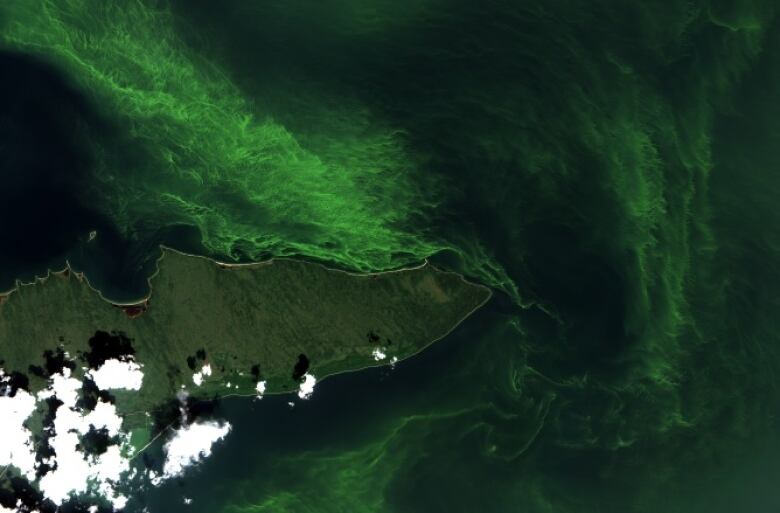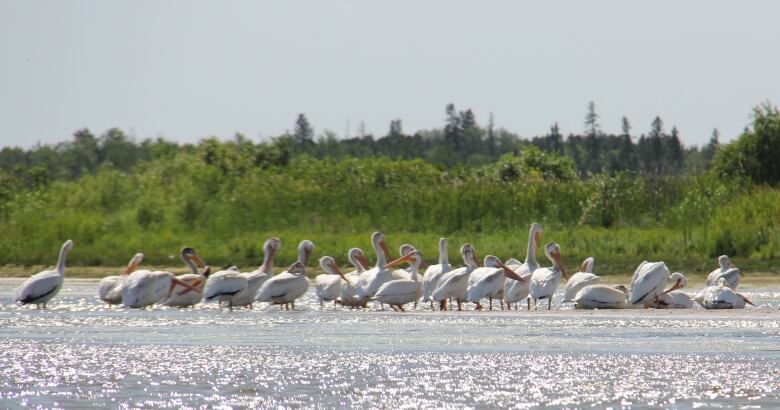When the lake is at stake: How the parties plan to 'save' Lake Winnipeg
Wetlands preservation, sewage upgrades and tougher regulations on tap for PCs, NDP, Libs and Greens

Back in the days before microplastics were found on mountaintops, coral reefs started collapsing and ice sheets had yet to accelerate their drift into the oceans, Canadians seemed to care more about the environment between elections thanthey did in the middle of campaigns.
Environmental issues rarely made up more than a couple of spindly planks in provincial and federal party platforms, as political strategists correctly deduced voters were more immediately concerned about bread-and-butter issues such as health care,the economy or national security.
Many voters no longer think aboutthese issues in isolation from the environment. If you accept the idea all politics are personal, then it makes sense for people to only begin caring deeply about the environment when the environment startsto affect their bodies, their livelihoods or their fears about the future.
Manitoba's ongoing election campaign provides a minor illustration of this effect. The first summer election in this province since1990created a situation where campaign announcements could resonate in cottage country.
That's why it's no accident all four mainstream Manitoba parties have unveiled policies intended to alleviate the eutrophication of Lake Winnipeg that is, the excessive concentration of nutrients thatalter the ecology of the world's 11th-largest freshwater lake.
For many Manitobans, Lake Winnipeg's algae blooms are the problem. But algae is just one symptom of eutrophication, which does more than make the surface of the lake unpleasant to see and smell for a few daysin July and August.
When algae dies and decomposes, the lake is deprived ofoxygen. Some fish and other organisms can't thrive in low-oxygen conditions and when they leave the vicinity or die, the food web changes.
As well, more algae usually means more turbidity, or murkiness, which some organisms also can't handle. And every link pulled out of the food chain has some effect on other organisms.
In short, the ecology of Lake Winnipeg has been altered so much, environmental scientists are still trying to figure out what's going on. Calling it a dead lake isn't accurate; there's a little bit too much life within its waters, just not the kind of life commercial fishers, cottagers and beach-goers care to encounter.
How the Liberals say they'll'save' the lake
On Aug. 2, the Friday before the midsummer long weekend, the Manitoba Liberals were the first party out of the gate with a "plan to save Lake Winnipeg."
The party promised to issue $500 million worth of bonds to help the City of Winnipeg complete its ongoing wastewater-treatment upgrades, which actually will cost the city billions by the time all three of its sewage-treatment plants are upgraded and most of its combined sewers are replaced with dedicated pipes for storm waterrunoff and sewage.
When these upgrades were ordered up by the provincein 2003, all three levels of government were supposed to share the cost. While Mayor Brian Bowman would welcome half a billion dollars, that sum still falls short of the one-third-for-all cost-sharing plan envisioned by the Clean Environment Commission.

The Liberals also pledged to prescribe a specific form of sewage-treatment at the North End Water Pollution Control Centre. The promise may be seen as problematic by Winnipeg water and waste managers, as engineers typically don't like to take design direction from politicians.
The most ambitious pledge in the Liberal package wasto "create new wetlands and restore old ones, including the Netley-Libau Marsh," the latter being one of the largest freshwater coastal marshes in the world.
In its final report on the regulation of Lake Winnipeg's water levels, the Clean Environment Commission concluded Manitoba Hydro was partly responsible for the decline of Netley-Libau Marsh. While Hydro's regulation reducesthe severity of both droughts and floods on the lake, the commission concluded the absence of low-water years crucial for the germination of marsh plants was responsible for the loss of vegetation, which is capable of sucking up nutrients.
The report, released by Greg Selinger's NDP government on federal election day in 2015, did not receive widespread attention.It recommended Hydro look at places to rehabilitate wetlands and suggested the province take steps to protect wetlands, albeit without tallying up the costs associated with these works.
Restoring Netley-Libau Marsh in a lake where low water levels no longer occur would require a major feat of geo-engineering, with sections of the marsh hived off into cells where water levels can be controlled. The Liberals have not costed out this work, which could rival the construction of the Red River Floodway in scope if the entire marsh is in fact restored.
What the NDP pledged for Lake Winnipeg
On Aug. 23, NDP leader Wab Kinew stood alongside the Red River to pledge $500 million to complete the upgrades to the North End Water Pollution Control Centre.
Liberal leader Dougald Lamont called the pledge a "straight lift" of his party's pledge. But it's also subject to the same criticism: $500 million is not even one-third of the cost of the upgrades to the largest of the city's three sewage-treatment plants. The price tag for the North End work, which includes a new nutrient-removal facility and a new plant to process biosolids from all three Winnipeg sewage-treatment centres, is $1.8 billion.
Even if the city somehow manages to find the billions to do this work and replaces its combined sewers, Lake Winnipeg will not be saved.

The City of Winnipeg may be the largest point source of the nutrients that make its way into the lake, but it's only responsible for five per cent of the phosphorus loading. When all the upgrades are complete, Winnipeg's proportion of the Lake Winnipeg blame goes down to four per cent.
It will take a lot more than Winnipeg to save a lake that receives phosphorus from cities, towns, farms, factories, cottages and natural processes across a vast watershed that stretches from the Rocky Mountains to South Dakota to northwestern Ontario.
What the Tories plan to do
On Tuesday, Progressive Conservative Leader Brian Pallister unveiled a plan focused on nutrient removal much further upstream from Winnipeg.
Pallister pledged to add $50 million to a pair ofexisting funds that helpagricultural landowners preserve wetlands and other natural areas on farms.
The idea is the preservation of wetlands allows vegetation to remove phosphorus from the Lake Winnipeg watershed well before it flows into streams and rivers and ultimately the lake.

If elected, the Tories would top up the funds to a total of $204 million. The funds earn 4.5 to five per cent interest, PC Riel candidate Rochelle Squires said in a statement. That works out to $9 million to $10 million worth of dividends every year.
This money would be used to preserve about 75,000 acres of lands that encompass seasonal wetlands in Manitoba, in addition to 100,000 acres of more permanent wetlands already preserved by the Manitoba Habitat Heritage Corporation.
This effectively compensates agricultural producers for preserving wetlands instead of draining them. The only problem is wetlands-preservation alonecan not mitigate eutrophication.
"I don't think wetlands are seen as the sole solution, just a good component," said Gordon Goldsborough, a wetlands ecologist at the University of Manitoba."In general terms, water retention on the landscape, in various ways, is a big part of the answer."
How the Greens intend to stop the blue-greens
Manitoba's Green Party has yet to disclose its Lake Winnipeg plan in detail, but it's promising a carrot-and-stick approach.
The Greens would toughen up manure-management regulations and provide both grants and tax incentives to farmers to preserve wetlands, spokesperson Melissa Hiebert said in a statement.
A Green government would also work with Ottawa and the city to reduce combined-sewer outflows, she said. No cost estimates for these pledges were provided.












_(720p).jpg)


 OFFICIAL HD MUSIC VIDEO.jpg)
.jpg)



























































































